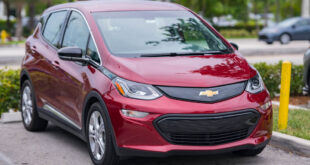How to Charge Electric Cars: A Comprehensive Guide Electric cars (EVs) are becoming increasingly popular as a sustainable alternative to traditional gas-powered vehicles. However, for new EV owners, understanding how to charge their cars efficiently and effectively can seem complex. This guide will provide you with everything you need to know about charging electric cars, from the basics to expert tips, ensuring your EV is always ready to hit the road.
Understanding Electric Vehicle Charging
What Are the Types of EV Chargers?
- Level 1 Chargers
- Uses a standard 120-volt outlet.
- Ideal for overnight home charging.
- Slow charging speed: Adds 3-5 miles of range per hour.
- Level 2 Chargers
- Requires a 240-volt outlet or dedicated charging station.
- Faster charging: Adds 12-60 miles of range per hour.
- Commonly installed at homes, workplaces, and public charging stations.
- DC Fast Chargers
- High-speed charging for long-distance travel.
- Can charge an EV up to 80% in 20-40 minutes.
- Found along highways and major routes.
Charging at Home vs. Public Stations
- Home Charging
- Convenient and cost-effective.
- Requires installation of a Level 2 charger for efficiency.
- Public Charging Stations
- Ideal for road trips and urban driving.
- May require membership or payment via apps.
Step-by-Step Guide to Charging an Electric Car
1. Choose the Right Charger
Select a charger that suits your EV’s battery capacity and your daily driving habits.
2. Locate Charging Stations
Use apps like PlugShare or ChargePoint to find nearby charging stations.
3. Plug in Your EV
- Align the charging connector with the port.
- Firmly attach the connector until you hear a click.
4. Monitor the Charging Process
Most EVs display charging progress on the dashboard or app.
5. Unplug and Store the Charger
Once charging is complete, unplug the charger and store it safely.
Benefits of Charging Your EV at Home
- Cost Savings: Home charging rates are typically lower than public stations.
- Convenience: Charge your EV while you sleep.
- Customization: Set charging schedules to optimize energy use.
Tips for Efficient Electric Car Charging
- Charge during off-peak hours to save money.
- Avoid frequent fast charging to protect battery health.
- Keep your battery level between 20% and 80% for optimal longevity.
- Use weather protection for outdoor charging setups.
- Regularly inspect your charging equipment for wear and tear.
FAQs About Charging Electric Cars
1. How long does it take to charge an EV?
It depends on the charger type. Level 1 takes 8-20 hours, Level 2 takes 4-8 hours, and DC fast chargers take 20-40 minutes.
2. Can I charge an EV in the rain?
Yes, EVs and chargers are designed to be safe in wet conditions.
3. How much does it cost to charge an EV?
Costs vary by location and electricity rates, but home charging is generally cheaper than gas.
4. Do all EVs use the same charger?
Most EVs use standard connectors, but Tesla vehicles require adapters for non-Tesla stations.
5. What is a charging network?
It’s a collection of charging stations managed by a provider, often accessible via membership or app.
Conclusion
Charging an electric car may seem daunting at first, but it quickly becomes second nature with the right knowledge and tools. By understanding the types of chargers, choosing the best options for your needs, and following best practices, you can maximize your EV’s efficiency and enjoy the many benefits of electric driving.
Invest in the proper charging setup today and embrace a cleaner, more sustainable future with your electric car.
How to Charge Electric Cars
 oto car insurance used car repair
oto car insurance used car repair
